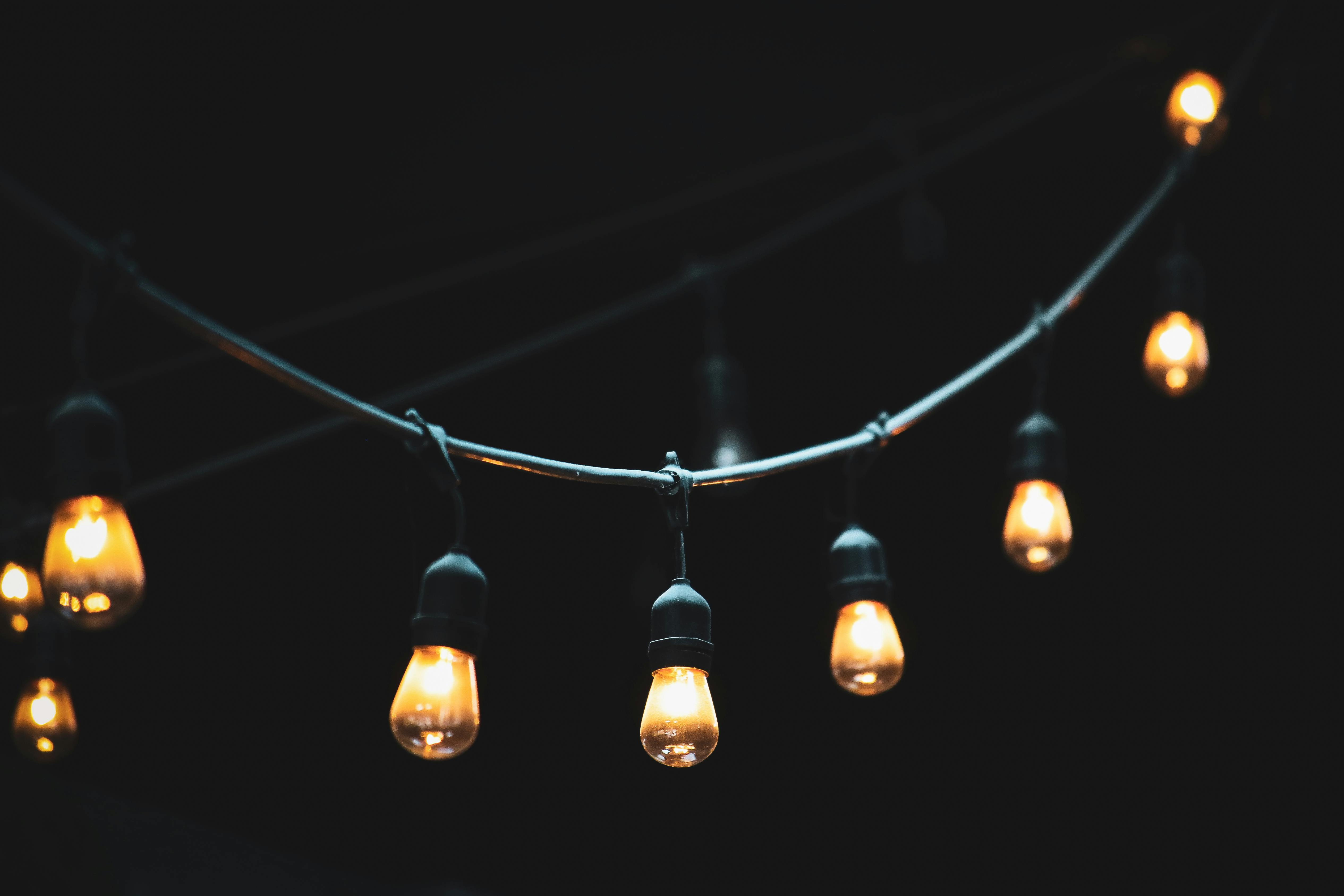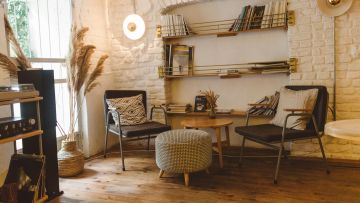Creating an effective lighting setup in a room involves more than just selecting a few light fixtures; it’s about crafting an atmosphere that aligns with the room's purpose and enhances its aesthetic appeal. A well-designed lighting scheme takes into account not only the type of fixtures but also their placement, brightness levels, and the mood they create. For instance, a cozy living room may benefit from warm, dimmable lights, while a home office requires bright, focused illumination for productivity. Additionally, lighting plays a crucial role in showcasing the architecture and design elements of the room, such as highlighting textures, materials, or colors. Proper lighting can also influence how people perceive the size of a space—strategically placed lights can make small rooms appear larger and airy, or large rooms feel intimate and cozy.
Moreover, designing lighting goes beyond functionality and aesthetics; it also involves energy efficiency and sustainability. Modern lighting technologies, such as LED bulbs and smart systems, allow homeowners to create versatile setups that can adapt to different needs throughout the day while reducing energy consumption. Whether you’re redesigning an existing room or starting from scratch, a thoughtful lighting plan can completely transform the space, making it more comfortable, inviting, and tailored to your lifestyle.

Understanding the Basics of Lighting Design
Lighting design can be broken into three primary categories: ambient, task, and accent lighting. Each type serves a distinct purpose, and together they create a cohesive and visually appealing environment. Ambient lighting serves as the room’s primary source of illumination, ensuring a uniform distribution of light. It’s often achieved through overhead fixtures, such as chandeliers, recessed lights, or ceiling-mounted lamps. Ambient lighting sets the overall tone of the room, making it essential to select the appropriate brightness and color temperature for the space—warmer tones for relaxation areas and cooler tones for functional spaces like kitchens.
Task lighting focuses on specific areas where precision and clarity are required, such as reading nooks, workstations, or kitchen countertops. It’s designed to reduce eye strain and enhance productivity by providing directed, shadow-free light. Common fixtures for task lighting include desk lamps, under-cabinet lighting, or pendant lights positioned above a kitchen island. Incorporating dimmable task lights can also provide flexibility, allowing you to switch between focused work and a more relaxed atmosphere.
Accent lighting is the final layer, used to draw attention to decorative or architectural elements, such as paintings, sculptures, or textured walls. This type of lighting is more about creating visual interest and enhancing the room’s design than serving a functional purpose. Accent lights, such as track lighting, wall sconces, or small LED spotlights, are typically brighter than ambient lights to create contrast and highlight specific features. By combining these three layers, you can achieve a balanced lighting setup that serves both practical and aesthetic needs, making the room not only functional but also visually engaging.

Choosing the Right Fixtures for Each Room
Selecting appropriate light fixtures is one of the most important steps in creating a functional and visually appealing lighting design. The type of fixtures you choose should align with the room's purpose, design aesthetic, and desired ambiance. Each space in your home has unique lighting needs, and the right combination of fixtures can significantly enhance its functionality and mood. For example, in living rooms, floor lamps or chandeliers equipped with dimmer switches can provide both general lighting and a cozy atmosphere for relaxing or entertaining. In kitchens, bright and focused task lighting, such as under-cabinet LED strips, is essential for food preparation and creating a clean, modern look.
Adding artistic and versatile pieces, such as an Akari lamp, can elevate the design of any room. These Japanese-inspired lamps are not just light sources; they are statement pieces that exude elegance and softness. Their warm, diffused glow enhances the ambiance, making them a perfect addition to spaces that prioritize comfort and style.
To help you select the right fixtures for different areas of your home, consider the following:
Living Room:
- Chandeliers or pendant lights for ambient lighting.
- Floor lamps or table lamps for additional task or accent lighting.
- Dimmable fixtures to adjust brightness according to the time of day or activity.
Kitchen:
- Under-cabinet LED strips for focused task lighting.
- Recessed ceiling lights for general illumination.
- Pendant lights over the kitchen island for both style and functionality.
Bedroom:
- Bedside table lamps or wall-mounted sconces for reading.
- Overhead fixtures with dimmers for adjustable ambient light.
- Accent lighting to highlight decor or artwork.
Bathroom:
- Vanity lights on either side of the mirror to minimize shadows.
- Ceiling-mounted fixtures for overall brightness.
- Waterproof LED lights for the shower area.
Home Office:
- Desk lamps with adjustable arms for precise task lighting.
- Overhead lights with neutral color tones to reduce eye strain.
- Accent lights to enhance the background during virtual meetings.
By carefully selecting and layering fixtures, you can create a dynamic lighting setup tailored to the specific needs and aesthetics of each room in your home.

Incorporating Layered Lighting
Layered lighting involves using multiple light sources in a single room. Start with ambient lighting as the foundation, such as ceiling-mounted fixtures or recessed lights. Add task lighting to areas where detailed work is performed, like reading nooks or office desks. Finally, use accent lights to draw attention to specific elements, such as shelves or paintings. Layering not only improves functionality but also provides depth and warmth to a room’s design.
The Role of Natural Light
Natural light is one of the most valuable and sustainable elements in any lighting plan. It not only illuminates a space but also boosts mood, enhances productivity, and reduces the need for artificial lighting during daylight hours, lowering energy costs. Large windows, glass doors, and skylights are excellent ways to bring in more natural light. To maintain privacy while allowing sunlight to filter through, opt for sheer curtains, light-colored blinds, or frosted glass. These materials soften harsh light and create a warm, diffused glow. Additionally, strategically placing mirrors or metallic finishes near windows can amplify natural light, reflecting it throughout the room and making the space appear larger and more open.
For rooms with limited natural light, you can recreate its effect with warm-toned LED bulbs or fixtures designed to mimic sunlight. Light tubes, for example, channel natural light from the roof into interior spaces like hallways or bathrooms. Incorporating plants that thrive in low light can also enhance the feeling of natural brightness, adding both aesthetic appeal and a sense of vibrancy to the room.
Energy-Efficient Solutions
In today’s environmentally conscious world, energy-efficient lighting is a cornerstone of modern interior design. LEDs, or light-emitting diodes, are the most efficient choice, using up to 80% less energy than traditional incandescent bulbs. Available in a variety of shapes, sizes, and color temperatures, LEDs can cater to different rooms and moods. For example, use cool white LEDs for kitchens and workspaces, while opting for warm white tones in living rooms and bedrooms for a cozier feel.
Smart lighting systems are another innovative solution, enabling users to control brightness, color, and schedules through apps or voice commands. These systems not only add convenience but also minimize energy waste by ensuring lights are only on when needed. Incorporating motion sensors in less frequently used areas, such as hallways or closets, further enhances efficiency. For more ideas on blending sustainable design with aesthetics, check out this article.
Creating a Cozy Atmosphere
Lighting has the power to turn any room into a warm and inviting haven, fostering relaxation and comfort. The key to creating this atmosphere is flexibility—dimmable lights allow you to adjust brightness levels to suit the mood or activity. For example, lower the lights during movie nights or increase brightness for social gatherings. Layering lighting sources, such as combining overhead fixtures with table lamps or string lights, adds depth and softness to the room.
Decorative fixtures, like pendant lights or an akari lamp, can further enhance the room's ambiance. Akari lamps, with their Japanese-inspired design, diffuse light gently, creating a soothing glow that balances functionality with artistic appeal. Adding candles or fairy lights can also infuse the space with charm and warmth, making it perfect for unwinding after a long day. For more inspiration on personalizing your space, explore this guide.
By combining natural light, energy-efficient technology, and creative design, you can achieve a lighting setup that is both practical and captivating.
Practical Tips for Implementation
- Plan the layout. Sketch the room’s layout to determine where lighting is needed most.
- Consider color temperature. Use warm lights (2700-3000K) for living spaces and cool lights (3500-5000K) for work areas.
- Test placement. Experiment with fixture placement to avoid harsh shadows or overly bright spots.
- Mix styles. Combine traditional and modern lighting fixtures for a balanced look.
Recommended Lighting by Room
|
Room |
Type of Lighting |
Fixtures |
|
Living Room |
Ambient, Task, Accent |
Chandeliers, Floor Lamps, Sconces |
|
Kitchen |
Task, Ambient |
Pendant Lights, Under-Cabinet LEDs |
|
Bedroom |
Ambient, Accent |
Bedside Lamps, Dimmer Switches |
|
Office |
Task, Ambient |
Desk Lamps, Overhead LEDs |
Conclusion
Designing lighting in a room is an art and science that requires careful planning and consideration. By layering light sources, incorporating energy-efficient solutions, and choosing fixtures like an Akari lamp, you can create a functional yet aesthetically pleasing space. Don't hesitate to experiment with styles and techniques to find the perfect balance for your home.
















